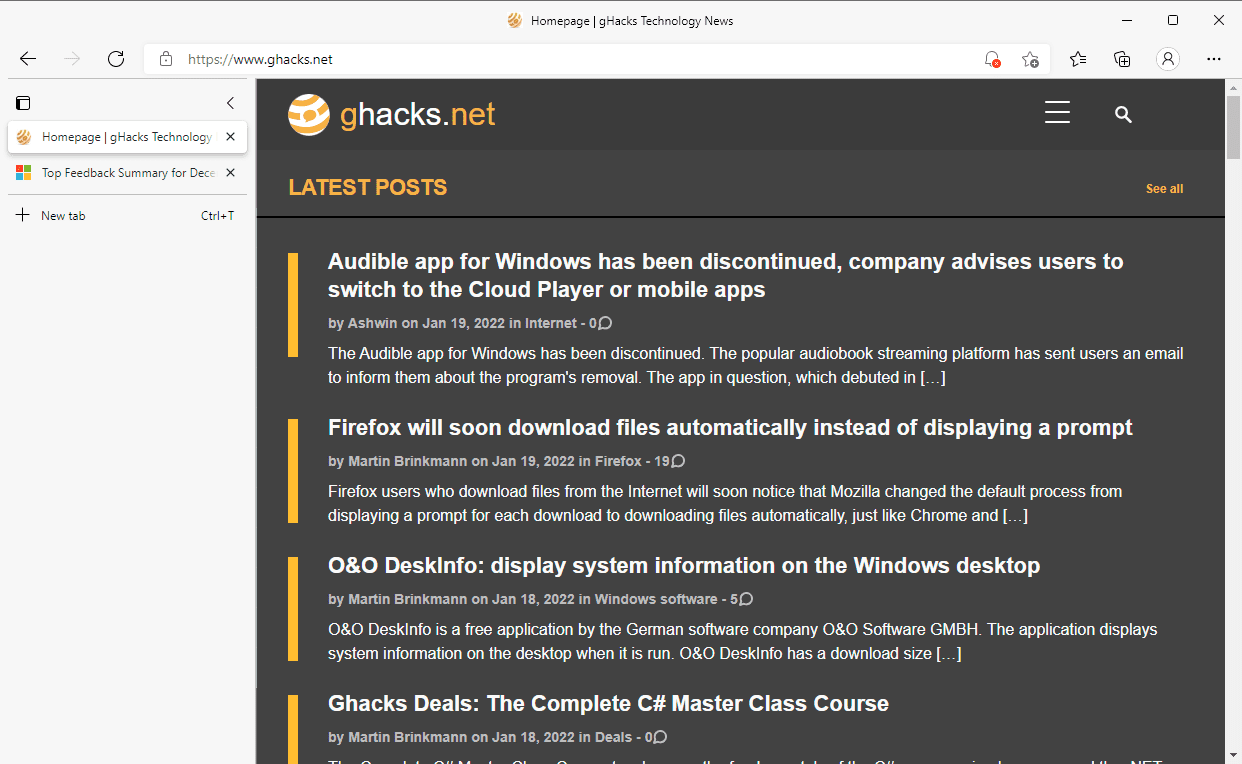A sports ticker, a games button, buy now pay later integration, a quick actions bar on the right, Bing visual search for images, and more. Microsoft added several new features to its Edge web browser and is testing many more using A-B tests.

Back in December 2021, I asked whether Microsoft was adding too many controversial features to its web browser. The general consensus of people who commented on the article was that Microsoft did so indeed.
Why is Microsoft adding or testing this many features in Edge? Is it a throw features at the userbase and see what sticks kind of development approach?
Adding features to a browser is not considered a bad thing usually. Some browsers, Vivaldi for instance, support lots of features that set it apart from other browsers. Microsoft faces tough competition in the browser market. Chrome is very dominant and there are plenty of other Chromium-based browsers besides Chrome that users may pick when it comes to the web browser.
For Microsoft Edge to compete and get users to use it, it needs to have convincing arguments. Microsoft's main advantage is the integration in the Windows operating system. Edge is the default browser on Windows 11 and Windows 10, and the first browser that users of new systems will use. Some use it only to download their favorite browser, others may stick with Edge because it is there.
Microsoft uses similar shady tactics as Google to promote Edge; this includes creating an artificial URL handler on Windows that opens web addresses only in the Edge browser, messages to users who attempt to download another browser, or the resetting of user changed settings regarding browsers.
All of these give Microsoft an edge over its competition, and Google is probably the only company that has means equal to Microsoft when it comes to promoting Chrome on its properties.
Some Edge features improve user choice. The vertical tabs feature is a prime example of that, as it moves the horizontal tab bar of the browser to the side, which improves handling in several meaningful ways and works well on widescreen displays.
The testing of new features could be an attempt to set Edge further apart from other browsers. Features like the integration of the sports ticker are unique to Edge, and if Telemetry suggests that users see these favorable, it could improve Edge's market share or retain it.
The downside to testing all these new features is that users could get the impression that a browser is getting bloated, especially if features don't improve core browsing capabilities. Simple on-off switches for these features may not be sufficient, if Microsoft decides to push the features in the browser, for instance by displaying popups to users or setting them to on by default.
Do the added features decrease Edge's performance in any way? I could not find any benchmarks, but adding more and more features to a browser could certainly impact some metrics, including the loading performance or size.
Closing Words
Microsoft is adding most new features to experimental versions of Edge first. The features get tested then by users and Microsoft uses feedback and Telemetry data to determine a feature's fate. Not all of the features will make it into stable versions of Edge in the end. Still, it feels a lot like feature overload currently, with Microsoft testing more and more features in Edge that at least some users might want to see implemented as extensions rather than features that everyone is exposed to.
Now You: what is your take on the development approach?
Thank you for being a Ghacks reader. The post Microsoft Edge: Microsoft's "see what sticks" development approach appeared first on gHacks Technology News.

0 Commentaires